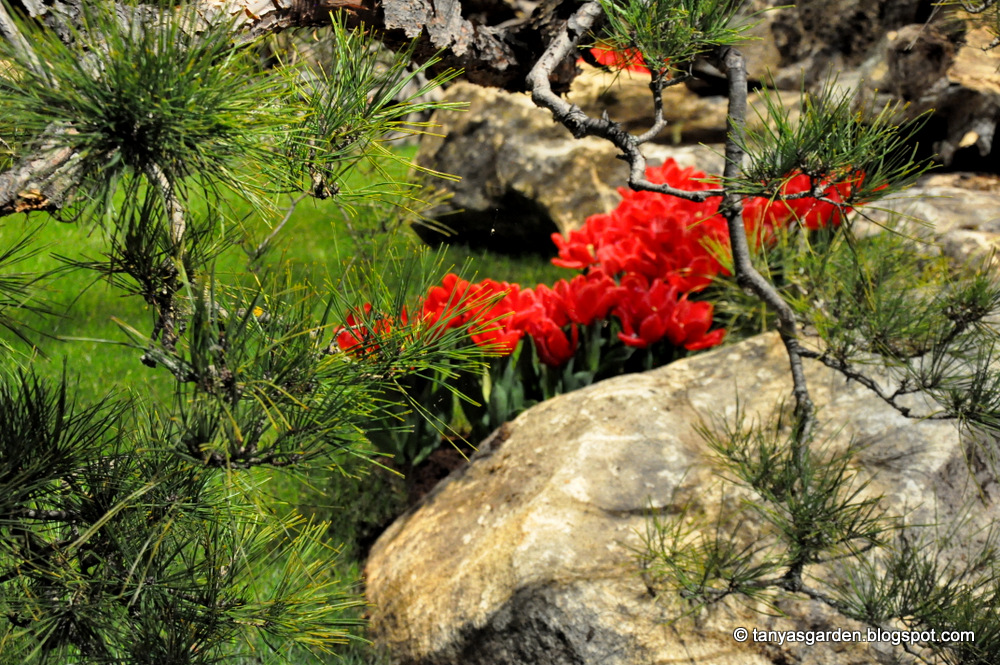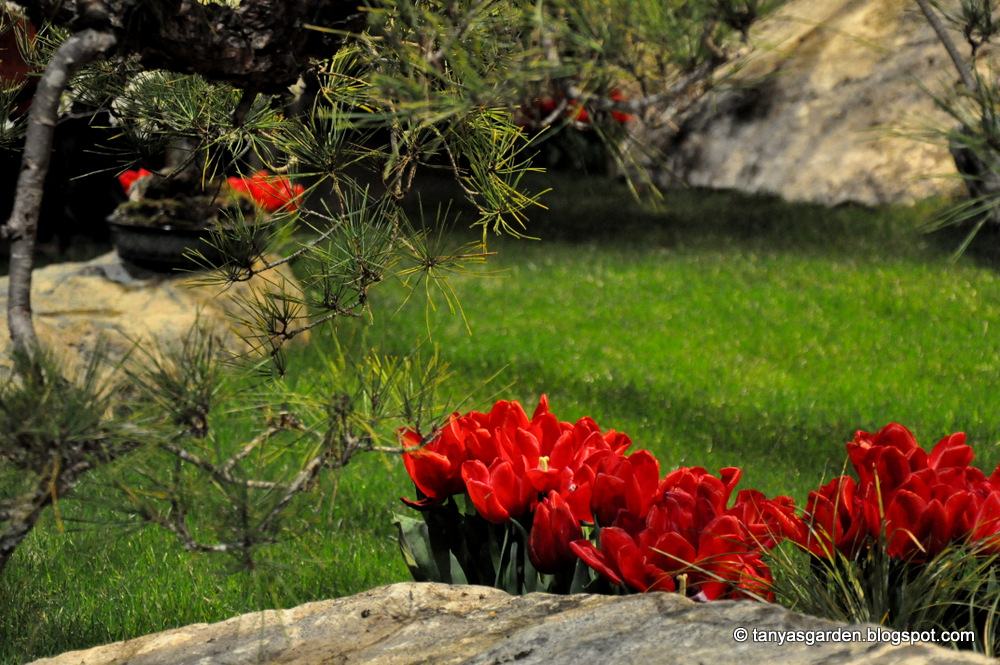The name of this display garden was 'Birds Do It... Bees Do It...'
As a person who had an uncle-beekeeper and spent many happy childhood days among beehives, I was naturally partial to this garden.
Back in those times, there was nothing more exciting for me than to find myself during a morning in a forest where dozens of beehives stood.
It was a magic place with no industry within hundreds of miles, where the sound of a creek, carrying crystal water, together with the songs of birds and the buzzing of bees were the only noisemakers.
Starting in kindergarten, we used to help the adults harvest honey by carrying the frames filled with the thick amber treasure from the hives to the honey extractor.
We held the frames putting our thumbs under the frame tops before handing them to the people who operated the extractor and then watching how the pure sweetness flew from it into the bucket.
Once, I didn't notice a bee, and it got squeezed between my thumb and the frame. Of course, it stung me, but I couldn't drop the precious frame and continued to carry it. Ouch!
It wasn't the only sting that I got, but it never stopped me from enjoying that place.
Comb honey was our reward. I'd never ever trade it for all the candy and other treats of the confectionery industry.
Sweet memories.
This is what the creators of the display garden said in their show brochure:
"Scientists had struggled to find the trigger for so-called Colony Collapse Disorder (CCD) that
has wiped out an estimated 10 million beehives, worth $2 billion, over the past six years.
Suspects have included pesticides, disease-bearing parasites and poor nutrition.
But in a first-of-its-kind study published today in the journal PLOS ONE, scientists
at the University of Maryland and the US Department of Agriculture have identified
a witch’s brew of pesticides and fungicides contaminating pollen that bees collect to feed their hives." Source
Some plants from the West Seattle Nursery display garden:
Louie Eastern White Pine (Pinus strobus 'Louie')
Persian Ironwood (Parrotia persica)
Cousin Itt (Acacia cognate)
Columnar Norway Spruce (Picea abies cupresinna)
Fuchsia (Fuchsia 'Delta's Sarah')
Winter Daphne (Daphne odora 'Maejima')
Brazilian Giant Rhubab (Gunnera maicata)
Bear's Breeches (Acanthus major 'Whitewater')
Rice Paper Plant, Paperbush (Edgeworthia chrysantha 'Nanjing Gold')
Dwarf Flowering Peach (Prunus persica 'Bonfire')
Tulip (Tulipa 'Princess Irene')
Beartongue (Penstemon 'War Axe')
Hook Sedge (Uncinia rubra 'Belinda's Find')
Himalayan Maidenhair Fern (Adiantum venustum)
Cattail bird feeders
"This garden really is about the birds and the bees (in the literal sense), but a lush, grassy area accented by a subtle water feature provides a setting to form your own interpretation of romance. Blooming spring bulbs add splashes of color, but it’s also a setting where backyard gardeners grow their own fruits and vegetables.
Our lives intersect with birds and bees on many levels. An elevated live bee house is the garden’s focal point along with inviting blooming plants for our winged neighbors. Constructed using recycled materials and salvaged wood, the bee house spotlights the vital importance of bees in the production of food.
Our feathered friends aren’t left out in the cold with artistic bird houses providing shelter. And a decorative but functional “insect hotel” further underscores the importance of all the inhabitants in our eco-system.
“Take-home ideas” for your own garden: Plant selections that attract and support birds and bees"
Wonderful!
***
West Seattle Nursery & Garden Center website: West Seattle Nursery***Copyright 2015 TatyanaS






































































